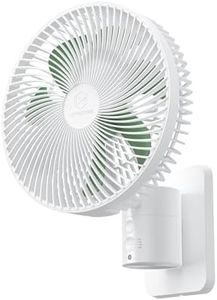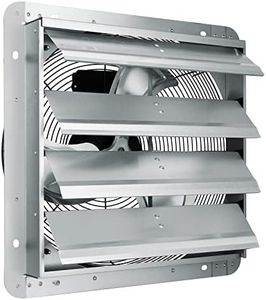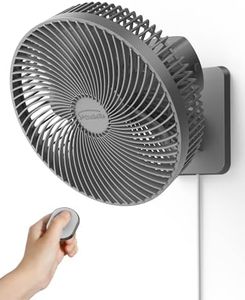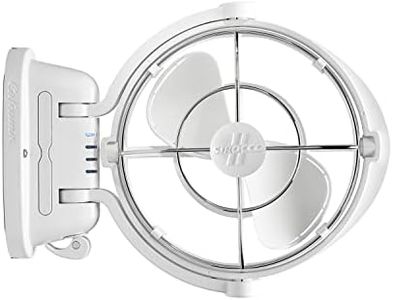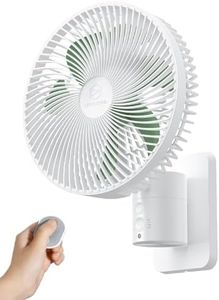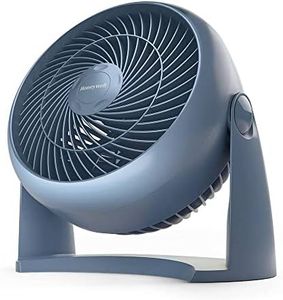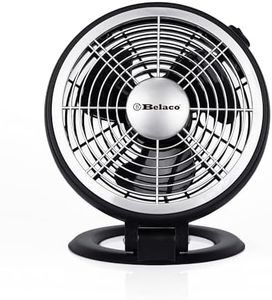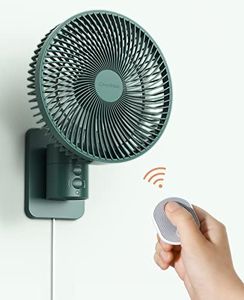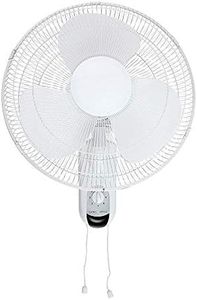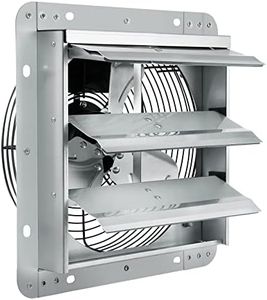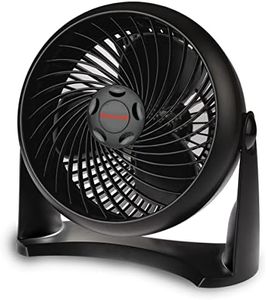We Use CookiesWe use cookies to enhance the security, performance,
functionality and for analytical and promotional activities. By continuing to browse this site you
are agreeing to our privacy policy
10 Best Wall Mount Fans
From leading brands and best sellers available on the web.Buying Guide for the Best Wall Mount Fans
When shopping for a wall-mount fan, it's important to think about where you want to use it and what kind of airflow you need. Wall-mount fans are great for saving space while providing strong air movement, making them ideal for homes, offices, or workshops. The best choice will depend on factors like the fan's size, speed settings, and special features. By understanding the key specifications, you can find a fan that fits your room size and comfort needs without making things too complicated.Fan Size (Blade Diameter)The size of a wall-mount fan, typically measured by the diameter of its blades, determines how much air it can move. Larger fans (around 18 inches or more) push more air over a broader area, making them suitable for bigger spaces like garages or large rooms. Medium sizes (12 to 16 inches) work well in standard bedrooms or offices, while small fans (under 12 inches) are best for confined areas or when you want a gentle breeze. Think about the size of your room and choose a fan size that matches it to ensure good air circulation.
Speed SettingsSpeed settings on a wall-mount fan let you adjust how much air the fan circulates. Most fans offer two to three speeds: low, medium, and high. More speed options give you better control for different situations, such as a gentle flow for nighttime or a strong breeze on a hot afternoon. Consider how much variability you need—if you like adjusting airflow frequently, pick a fan with more speed options.
OscillationOscillation means the fan can move side-to-side, spreading airflow wider in a room. Having an oscillating feature is important if you want even cooling across a larger space or for multiple people. If you're only cooling a specific spot, oscillation might not be necessary. Decide based on whether you need to cool just one area or distribute air around the whole room.
Remote ControlA remote control lets you adjust the fan's settings from a distance, adding convenience, especially if your wall-mount fan is high up or hard to reach. If you plan to mount the fan out of easy reach, or want the comfort of changing settings from your bed or desk, look for a model with remote control capabilities.
Noise LevelNoise level refers to how loud the fan is when it's working, usually described in decibels or as 'quiet' or 'silent' in product information. Some people are sensitive to noise, especially if using the fan in a bedroom or study. If you need a quiet environment, look for reviews or specs mentioning low noise output. If noise isn’t a concern, such as in a garage, this may matter less.
Mounting MechanismThe mounting mechanism is how the fan attaches to the wall. Some fans use a bracket that you screw into the wall, while others might offer more flexible or tool-free installation. Make sure the way the fan mounts is compatible with your wall surface and that installation will be straightforward for your situation. If you’re not comfortable with complicated installation, choose a fan advertised as easy to mount.
Tilt AdjustmentTilt adjustment means you can angle the fan head up or down after you mount it on the wall. This lets you direct airflow exactly where you want, which is useful if you need to cool a specific area rather than the whole room. If precise airflow direction matters to you, pick a fan with easy tilt adjustment.
Power ConsumptionPower consumption is about how much electricity the fan uses, usually measured in watts. Fans with lower wattage use less energy, which can save on electricity bills if you use the fan often. If you're concerned about long-term running costs or want an environmentally friendly choice, check product details for energy usage information and choose a more efficient model.
